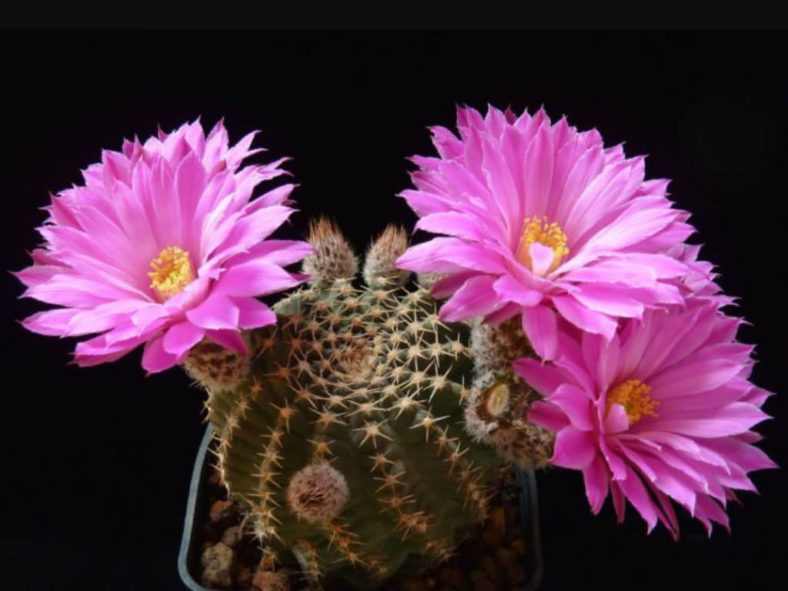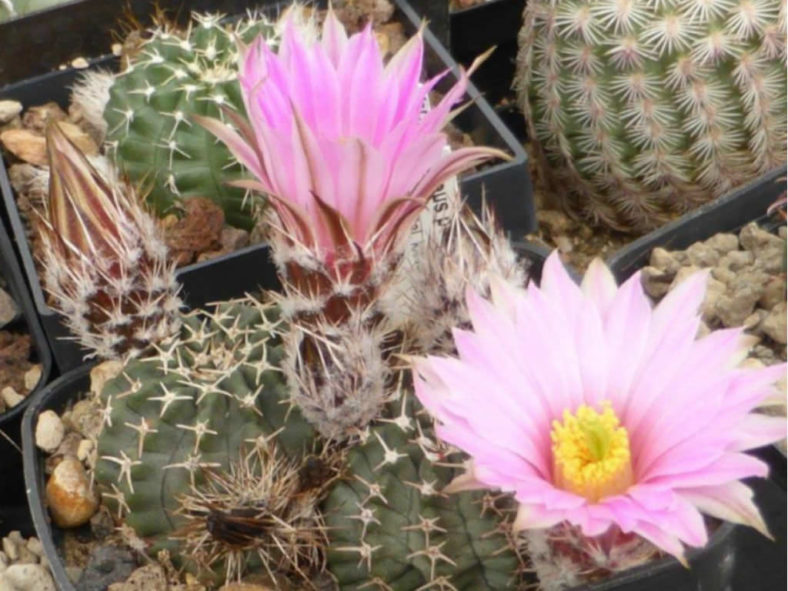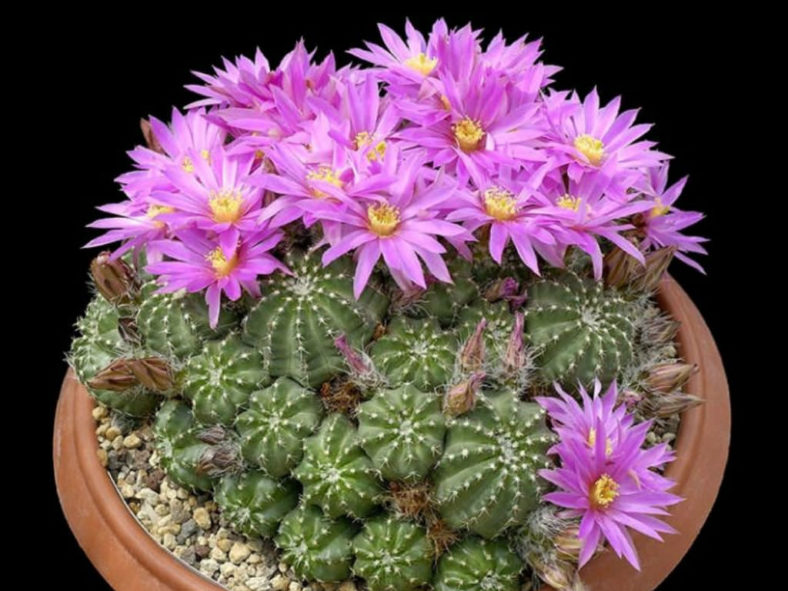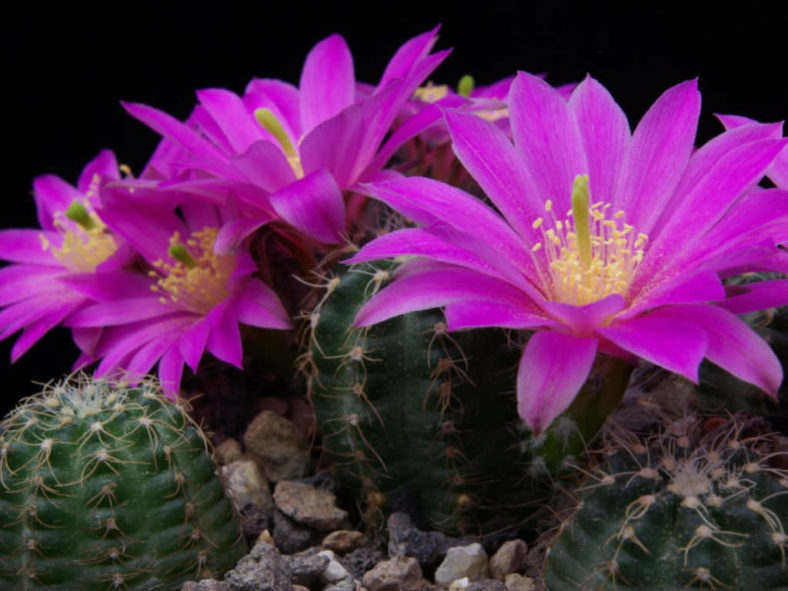Scientific Name
Echinocereus pulchellus (Mart.) Seitz
Synonym(s)
Echinocactus pulchellus, Echinocereus pulchellus subsp. pulchellus, Cereus pulchellus, Echinonyctanthus pulchellus, Echinopsis pulchella
Scientific Classification
Family: Cactaceae
Subfamily: Cactoideae
Tribe: Pachycereeae
Genus: Echinocereus
Description
Echinocereus pulchellus is a small cactus with spherical stems with short tubercles arranged in ribs, sometimes slightly spiraled. It produces offsets once mature and well-established. The stems can grow up to 1.6 inches (4 cm) in diameter. Each tubercle is tipped with an areole bearing a cluster of 3 to 7 inconspicuous spines.
The showy flowers are pinkish-white to hot-pink and can reach a diameter of up to 1.6 inches (4 cm).

Hardiness
USDA hardiness zones 8b to 11b: from 15 °F (−9.4 °C) to 50 °F (+10 °C).
How to Grow and Care
If you can grow other globular cactus successfully, you can most likely grow Echinocereus well. One of the key success factors is avoiding any hint of wet soil. Because their root systems are weak, they are especially prone to root rot, eventually killing your plant. Otherwise, they thrive on a program of intense bright light, little water, and a steady diet of light fertilizer. These cacti are vulnerable to mealybugs and aphids.
Echinocereus are slow-growing cacti that should only need repotting every other year or so. You can prolong the repotting by removing and potting plantlets in their pots. When repotting a cactus, remove it from its pot and remove any clumped soil. These plants tend to be shallow-rooted with weak root systems, so don't damage their roots.
See more at How to Grow and Care for Echinocereus.
Origin
Echinocereus pulchellus is native to Mexico.
Links
- Back to genus Echinocereus
- Succupedia: Browse succulents by Scientific Name, Common Name, Genus, Family, USDA Hardiness Zone, Origin, or cacti by Genus
Photo Gallery
Click on a photo to see a larger version.


